#george de galles
Explore tagged Tumblr posts
Text
Image faite par IA du Prince George futur roi d'Angleterre

8 notes
·
View notes
Text
Junot's first infidelity
-From the book "La Generale Junot, Duchesse d'Abrantès, d'après ses lettres, ses papiers et son 'journal intime' inédits" by Joseph Turquan, a biography of Laure Junot featuring previously unpublished information given to the author by Georges Aubert, Junot's grandson.
The book is from 1901, and therefore is a little dated in some regards, but overall creates a good portrait of Laure and Jean-Andoche Junot.

a little bit of context: it is important to know that Laure was aware of Junot's promiscuity before their marriage. She affectionately kept a portrait of Xraxarane, an Abyssinian woman who was Junot's mistress when he was in Egypt and bore him a son. It is unclear whether Junot promised fidelity or not, but it is certain that he made no effort to conceal his nature from his wife.
Junot, who, as his wife says, “did not have very firm principles in matters of marital fidelity,” took it into his head to court an Englishwoman, Lady C…, who had rented the large chateau de Bièvre, which Madame de Montesson had occupied, and which was neighboring Petit-Bièvre*. Relations quickly became intimate.
But it turned out that this lady had brought from London, as a “young companion” a French émigré, Comte de Las Cases. The latter never forgave Junot for the preference his Englishwoman gave him over him, and he later took revenge by pouring out the gall accumulated over nearly a quarter of a century on his name in the Memorial of Saint Helena.**
As for poor Mme. Junot, this first infidelity of her husband made her shed many tears, but the general proved to her that his wrong, after all, was not very serious, that she was wrong to cry; he made her laugh and obtained her forgiveness.
*Junot's country home at the time
**In the Memorial of Saint Helena Junot is only mentioned once and in an unflattering light. Laure Junot claimed that it was Las Cases rather than Napoleon who was to blame for this, saying that Napoleon had shown much more sympathetic sentiments towards Junot. Various letters from and about Napoleon after Junot's death seem to corroborate this.
24 notes
·
View notes
Text

Françoise Hardy
Icon of 60s music who sang of love as a source of ‘wretched, profound, endless questioning’
Françoise Hardy, who has died of cancer aged 80, shot to fame as part of France’s génération yé-yé, the jaunty transatlantic and cross-channel collision between French chanson and American rock’n’roll that also produced Johnny Hallyday and France Gall. But from the start, there was something that set her apart: a wistfulness, a sentimental self-reflection, a poise that belied a lifelong shyness and insecurity. A 60s icon, as big, for a while, in London as in Paris, Hardy was, in many ways, the antithesis of that restive, revolutionary decade.
Unlike her contemporaries, when she sang of love it was about “suffering and frustration, illusion and disillusion; wretched, profound, endless questioning”. Her songs, she told Le Monde, were a necessary outlet: “I wrote about my experience … A beautiful, melancholic melody is what best transcends the pain.”
Men fell, in droves, for her timid beauty. Mick Jagger described Hardy as his “ideal woman”. David Bowie, “passionately in love” for years, courted her backstage, in dressing gown and embroidered slippers. In 1964, the sleeve notes of Another Side of Bob Dylan featured a whole poem “for françoise hardy/at the seine’s edge”. (Two years later, after a concert at the Olympia music hall in Paris, Dylan invited the singer to a party in his suite at the George V, one of the capital’s grandest hotels. In his bedroom, he played her two tracks from Blonde on Blonde: Just Like a Woman and I Want You. Hardy always insisted she was so starstruck she never got the message.)
But the love of Hardy’s life, the father of her son and the agonising inspiration for many of her songs, was the French singer and actor Jacques Dutronc, whom she met in 1967 and married in 1981. The couple separated in the 90s, but never divorced, remaining on good terms. “Love is a remarkable force, even if its price is perpetual torment,” she said. “But without that torment, I would not have written a single lyric.”
Hardy was born in Nazi-occupied Paris, in the same maternity clinic at the top of the rue des Martyrs in the ninth arrondissement that had delivered Hallyday a few months earlier. Her mother was Madeleine Hardy, an accountant, and her father, Pierre Dillard, was a company director who was married to another woman. Françoise grew up in a two-room apartment nearby with her sister, Michèle, born 18 months later, and a solitary mother with whom Françoise had a “fusional, symbiotic relationship … I loved her probably too much – exclusively, unconditionally”. The girls rarely saw their father, who often neglected to pay his share of their upkeep and was regularly late with the modest fees for their Catholic education.
Weekends were spent with grandparents – notably an “egocentric, narrow-minded, frigid and emasculating” grandmother – outside Paris; many childhood holidays with friends of her mother’s in Austria, to learn German. Shy, dreamy, deeply ashamed of her unconventional family, Hardy turned to the radio, where in the late 50s, on the English service of Radio Luxembourg, she encountered a music – Presley, the Everly Brothers, Brenda Lee, Cliff Richard – that “affected me more than anything else. That ended up changing my life.”
Aged 16, she asked for a guitar for passing the first part of her baccalauréat. A year later, having passed the second part with honours, she taught herself a handful of chords “that produced most of my songs over the next 10 years”, and began writing. At the Sorbonne, studying German, she auditioned, unsuccessfully but not disastrously, for one record company, and started singing lessons.
Hardy’s contract with Vogue Records – who wanted “a female Johnny Hallyday” – was signed on 14 November 1961. She made her first TV appearance, in black and white on the state broadcaster’s only channel, six months later, and released her debut EP, featuring three songs of her own and a cover of a Bobby Lee Trammell song.
Her breakthrough came, rather incongruously, on the night of Charles de Gaulle’s October 1962 referendum asking voters whether France’s future presidents should be directly elected. In a musical interlude while the nation awaited the result, Hardy performed a track from her EP, Tous les garçons et les filles. The nation loved it. The song (sample line: “I walk down the streets, my soul in sorrow”) became a monumental hit in France, spending a total of 15 weeks at No 1 between October 1962 and April 1963 and becoming a million-seller. Within weeks Hardy was on the cover of Paris Match, plunged, still in her teens, into the whirlwind of the swinging 60s (which she detested: she disapproved of casual sex, avoided drugs, and could only ever remember being drunk twice).
Her first boyfriend, the photographer Jean-Marie Périer, ensured her picture – miniskirt, white boots, long hair, signature fringe – went around the world. Courrèges, Yves Saint Laurent and Paco Rabanne competed to dress her, for seasons at the Olympia in Paris, the Savoy in London, and shows in Germany, Italy, the Netherlands, Denmark, Spain, Canada and South Africa. In New York, William Klein photographed her for Vogue. Roger Vadim, Jean-Luc Godard and John Frankenheimer cast her in films.
The hits flowed, recorded – some in London, produced by Charles Blackwell – in French, English, German, Italian, some written by Hardy, others not.
But at the end of the 60s, barely five years after she began, Hardy abruptly gave up performing live, and the cinema. “I hated what it all involved,” she explained. “Being separated from the man I loved, the waiting, the solitude, depending on the phone. And I’ve never been able to act. I can’t simulate, or lie. Songwriting, on the other hand … dives deep.” Life in the fast lane, she declared, was “a gilded prison”.
But she continued recording, releasing a dozen bestselling albums in France, of which she always cited La Question (1971), a sophisticated collaboration with the Brazilian musician Tuca, as her favourite. She duetted with French artists Henri Salvador, Alain Souchon and Benjamin Biolay, and later with Damon Albarn and Iggy Pop.
Hardy was never very interested in politics (she decamped to Corsica with Dutronc for the duration of les événements of May 1968, whose student leaders she distrusted), although she had strong opinions about questions such as abortion. Hardy was, however, fascinated by astrology, writing two books on the subject.
She continued to work in later life, despite claiming that her 1988 album, Décalages, would be her last. A string of new recordings in the 1990s and 2000s, a 2008 autobiography, Le Désespoir des Singes (the title apparently derived from a monkey puzzle tree in the Bagatelle gardens near her Paris flat, because its sharp, spiky leaves reminded her of “men who have caused me despair”), and her last album, Personne d’autre, released in 2018, appeared despite family and personal tragedies: Hardy was at her mother’s side when, suffering from Charcot–Marie–Tooth disease, she died by euthanasia in 1994.
Hardy herself was diagnosed in 2004 with lymphoma, eventually recovering after an experimental form of chemotherapy – but only after she had been hospitalised, in an induced coma, in 2015. Three years later, another tumour was detected, this time in her ear. In 2021, she told the magazine Femme Actuelle (by email; she said she could no longer talk) that she would like to be able to choose to end her life, as her mother had done, and in 2023, in an interview with Paris Match, called on Emmanuel Macron, the French president, to legalise assisted dying.
Shortly before that second diagnosis, in 2018, Hardy reflected on a career that had brought pretty much every award French music can offer (plus a medal from the Académie Française), telling the Observer she had always been surprised that people – “even very good musicians” – had been moved by her voice.
“I know its limitations, I always have,” she said. “But I have chosen carefully. What a person sings is an expression of what they are. Luckily for me, the most beautiful songs are not happy songs. The songs we remember are the sad, romantic songs.”
She is survived by Dutronc, and by their son, Thomas.
🔔 Françoise Madeleine Hardy, singer, born 17 January 1944; died 11 June 2024
Daily inspiration. Discover more photos at Just for Books…?
35 notes
·
View notes
Text

Vogue Paris March 1981
Yves Saint Laurent Haute Couture Collection Spring/Summer 1981. Jerry Hall in a Prince of Wales wool suit and damask silk crepe satin blouse.
Yves Saint Laurent Collection Haute Couture Printemps/Eté 1981. Jerry Hall dans un tailleur en lainage Prince de Galles et blouse en crêpe satin de soie damassé.
Photo George Hurrell
#haute couture#ysl#yves saint laurent#fashion 80s#1981#spring/summer#printemps/été#jerry hall#george hurrell#vintage fashion
44 notes
·
View notes
Text
Discographie France Gall 1963-1964

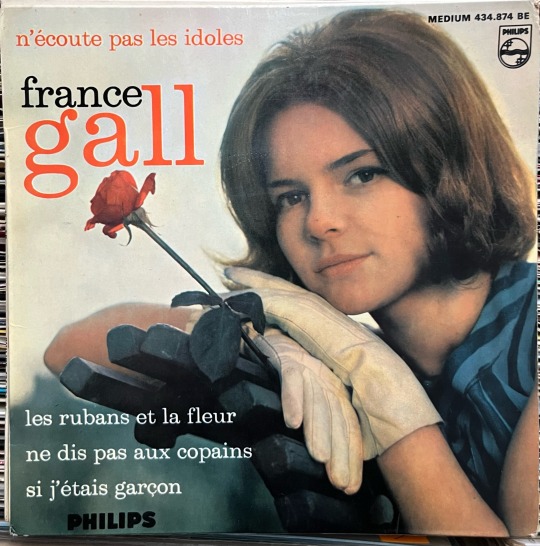



En octobre 1963 , France Gall sort son premier 45 tour EP avec « Ne sois pas si bête » (PMD: 7,18€) , qui correspond à l’adaptation par Pierre Delanoë de « Stand a little Closer » des américains Jack Wolf et Maurice « Bugs » Bower. Ce vinyle sera vendu à moins de 50000 exemplaires en France . Il sera 24eme au hits parade en Belgique francophone et 34eme en France.
En 1964, c’est grâce aux paroles et à la musique de Serge Gainsbourg qu’elle chante « N’écoute pas les idoles » (PMD: 5,€) et « Laisse tomber les filles » (PMD: 10,00€). « N’écoute pas les idoles est vendu à 75000 exemplaires alors que « Laisse tomber les filles » atteint les 100000 exemplaires. Ces deux morceaux approchent la 10ème place des hits parade français et belge.
La même année, elle collabore avec Robert Gall (son père) pour les paroles et Alain Goraguer pour la musique, et sort l’EP : « La cloche/Jazz à gogo » (PMD : 8€). C’est une adaptation française de la chanson « My boyfriend got a beatle haircut », interprétée la même année par Donna Lynn.
Toujours avec son père pour les paroles mais grâce a la musique de Georges Lifeman, elle chante un tube à l’époque « Sacré Charlemagne » (PMD: 4,00€). C’est son premier vrai succès avec 300000 exemplaires vendus et une 7eme place au hit-parade belge et une troisième au hit-parade français. L’histoire raconte que son papa aurait écrit cette chanson en repensant au jour où il avait grondé sa fille car elle avait écrit « Vive Charlemagne » dans l’ascenseur de leur immeuble. Cette chanson assortie de quelques erreurs historiques ( la barbe bleue de Charlemagne qui est finalement blanche et l’invention de l’école par Charlemagne qui est né bien après la création de celle-ci) ce qui ne l’a cependant pas empêché d’être la musique générique de plusieurs émissions télévisées telles que : « Le pensionnat de Chavagnes », « le pensionnat de Sarlat », « Retour au pensionnat » ou encore plus récemment « le club Dorothée ».
Toujours en 1964, France Gall sort trois albums :
-« N’écoute pas les idoles » premier 33 tours de 25 cm, paru en Mars 1964, reprenant les chansons de ses deux premiers super 45 tours ( « Ne sois pas si bête » et « N’écoute pas les idoles» ).
-« Mes premières vraies vacances » qui est son premier album studio 30 cm qui reprend les chansons de son premier album 25 cm en y ajoutant les morceaux de son troisième EP : « La cloche ». Cet album, sorti en Août 1964, est réalisé avec la participation d’Alain Goraguer et son orchestre.
- « Sacré Charlemagne, qui est un album 25 cm, reprenant des chansons déjà sortie sur EP ou 45 tours . Elle réalise de nouveau cette album avec l’orchestre d’Alain Goraguer. Les paroliers sont soit son père (Robert Gall), soit Serge Gainsbourg. Maurice Tézé rédige les paroles de « Nounours » et Maurice Vidalin celles de « Christiansen ».
En 1964, France Gall participe à l’album de Serge Gainsbourg dénommé « Gainsbourg percussions » dont le titre est « Pauvre Lola » . France Gall interprète le rire de Lola.
(PMD = Prix Moyen Discogs)
12 notes
·
View notes
Text
Montmartre Cemetery
Cemetery in Paris
The Cemetery of Montmartre is a cemetery in the 18th arrondissement of Paris, France, that dates to the early 19th century. Officially known as the Cimetière du Nord, it is the third largest necropolis in Paris, after the Père Lachaise Cemetery and the Montparnasse Cemetery.
Address: 20 Av. Rachel, 75018 Paris
Phone: 01 53 42 36 30
Burials: Dalida, France Gall, Heinrich Heine, Michel Berger, MORE

Given that Montmartre was a favourite haunt of so many artists, it is hardly surprising that many of them chose to be buried in Montmartre cemetery, known officially as the Cimitière du Nord. A plan at the entrance indicates the graves of some 300 famous artists and composers including Hector Berlioz, Jacques Offenbach, Edgar Degas, Michel Berger, France Gall and Vaslav Nijinski. Famous writers such as Emile Zola, Alfred de Vigny, Stendhal, Alexandre Dumas ‘son’ and Georges Feydeau are also buried here, as well as film legends François Truffaut, Jean-Claude Brialy and Sacha Guitry. There are more than 800 trees of 38 different varieties.
Did you know ? One of the most famous personalities buried here is none other than Dalida – whose bust you came across a little earlier on this walk. Her grave features a life-size sculpture by the same artist, Alain Aslan.
Montmartre cemetery - only entry at n° 20 avenue Rachel, Paris 18e

The Bust of Dalida
At the top of the stairs of Rue Girardon stands sculptor Alain Aslan’s bust of Dalida, the Egyptian-born French-Italian singer who lived in the nearby Rue d’Orchampt. Opposite, Rue de l’Abreuvoir offers a fine panoramic view of the Sacré-Cœur and surrounding houses.

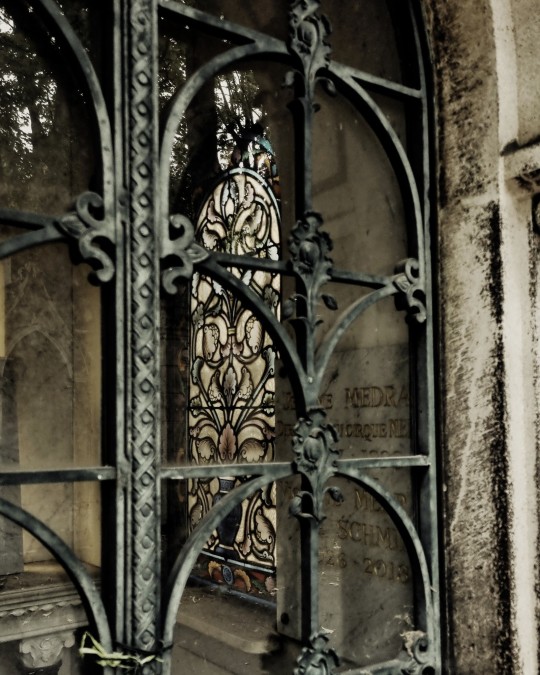
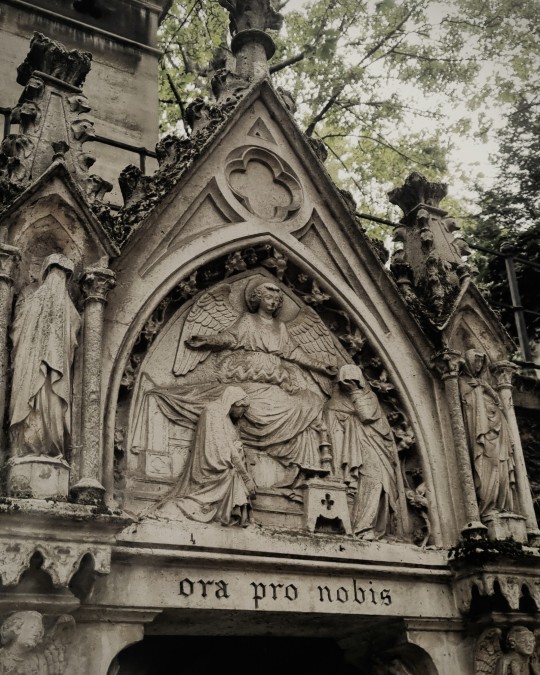

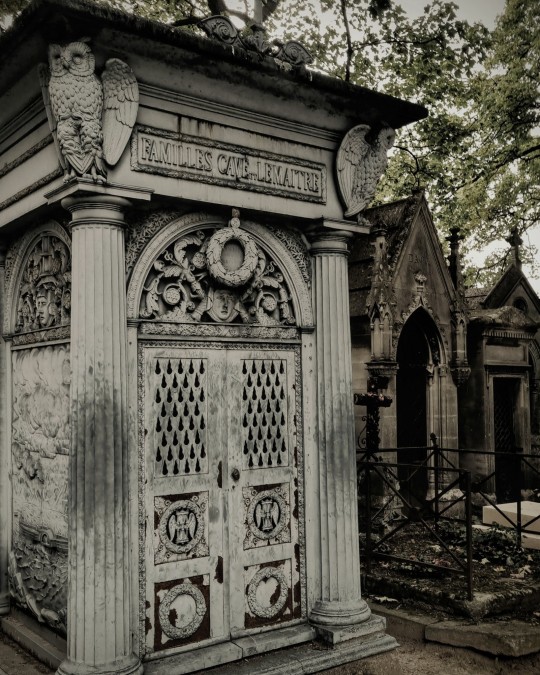

Montmartre Cemetery 🕊️
Paris, France, 24 VIII 2023
11K notes
·
View notes
Link
0 notes
Text
Transferts : Après North et Plisson, Provence Rugby rêve de Ned Hanigan (Waratahs)
Ned Hanigan fait parti des joueurs suivis par Provence Rugby – Icon Sport Provence Rugby frappe fort sur le marché des transferts. Après avoir recruté George North en provenance des Ospreys (Pays de Galles) et Jules Plisson en provenance de Clermont, les Aixois se mettent à rêver d’un Wallaby. Va-t-on voir débarquer un nouvel international du côté de Provence Rugby la saison prochaine ? C’est…

View On WordPress
0 notes
Text
La carte de voeux 2023 de Kate et William a un problème. Il manque quelque chose
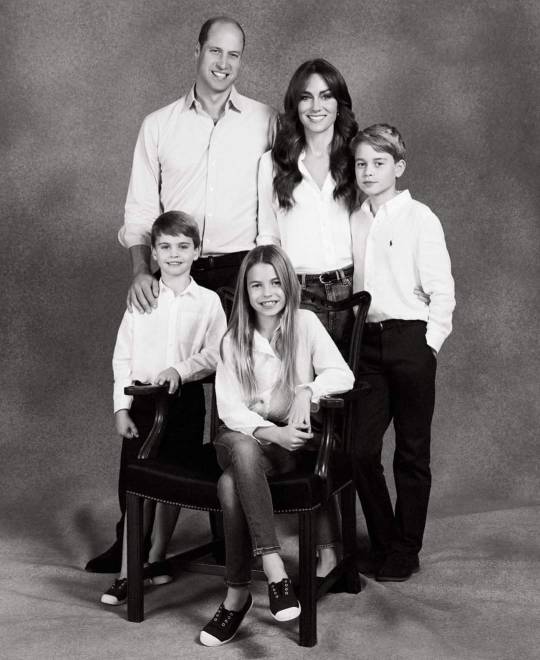
C'est un rituel immuable et addictif comme un biscuit de Noël saturé de beurre et de sucre. La carte de voeux de la famille royale pour les Fêtes dévoilée ce week-end 9 décembre sur leurs canaux officiels, la photo 2023 du prince et de la princesse de Galles n'a pas manqué de provoquer son lot de discussions passionnées et d'analyses psychologiques. Sourires Colgate éclatants, beautés éclatantes, chemises blanches éclatantes Kate, William, George, Charlotte et Louis sont l'incarnation éclatante de la perfection. Rassurez-vous toutefois, aussi beaux qu'ils soient, les Gallois ne sont pas non plus à l'abri d'un couac. Comme une poignée d'internautes et fins observateurs n'ont pas tardé à le pointer du doigt, cette photo aux allures de campagne de pub pour dentifrice a un petit problème. Jetez donc plutôt un oeil à la main du petit Louis
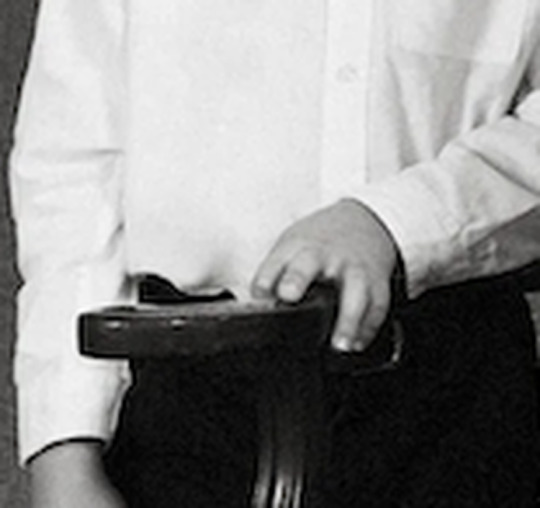
??? Ah oui, il manque quelque chose. Alors, abus de Photoshop ? Position volontairement bizzaroïde du majeur de Louis, qui n'en serait pas à sa première photo ratée? Complot familial pour nous faire parler et bien ça a marché. Toutes les théories sont ouvertes, on vous laisse choisir la vôtre
10 notes
·
View notes
Text
24 janvier 1984 Dévoilement du portrait en pied de la princesse de Galles par June Mendoza à la Worshipful Company of Grocers à Londres



Le portrait a été peint lors de six séances au palais de Kensington, la résidence londonienne de Diana et de son mari. La photo a été commandée par la Worshipful Company of Grocers pour marquer la cérémonie de l'année dernière au cours de laquelle la princesse a obtenu la liberté de société, une distinction honorifique décernée en guise de marque d'estime.
Le tableau a été accroché dans la salle de banquet de l'entreprise aux côtés des portraits du roi Charles II, du roi Guillaume III et du roi George III. Les guildes de marchands, dont les membres sont en grande partie composés d'hommes d'affaires éminents, descendent des guildes commerciales médiévales



0 notes
Text
Vidéo. WTF. Les Gallois imitent Cheslin Kolbe en contrant George Ford
Scène cocasse à Twickenham où George Ford s’est fait contrer sur sa transformation face au Pays de Galles dans le Six Nations. #ENGWAL
L’équipe d’Angleterre s’est imposée face au Pays de Galles 16-14 à Twickenham lors de la deuxième journée du Tournoi des Six Nations. Une semaine après la victoire inaugurale face à l’Italie à Rome, les hommes de Steve Borthwick récidivent et sont en lice pour un Grand Chelem cette année. Le Pays de Galles, malgré une supériorité numérique temporaire à 15 contre 13, n’a pas réussi à prendre le…

View On WordPress
0 notes
Text
Kate Middleton brise la tradition familiale à l'occasion du 10e anniversaire de Prince George
Le prince et la princesse de Galles ont célèbré samedi le dixième anniversaire de leur fils aîné, le prince George, mais de manière inattendue, Kate a décidé de rompre la tradition familiale. Le couple royal a posté une nouvelle photo de George souriant assis sur les marches du château de Windsor. Cependant, au lieu que Kate prenne la poto oficielle d’anniversaire, une tradition qu’elle a…

View On WordPress
0 notes
Text

L'Art et la mode Octobre-Novembre 1956
Pierre Balmain Haute Couture Collection "Jolie Madame de France" Fall/Winter 1956-57. Marie-Thérèse wears a short cape jacket, lined with shiny black otter, made with a bronze green Prince of Wales suit"
Pierre Balmain Collection Haute Couture "Jolie Madame de France" Automne/Hiver 1956-57. Marie-Thérèse porte une courte veste cape, fourrée de loutre noire et brillante, fait ensemble avec un tailleur en Prince de Galles vert bronze"
Photo Georges Saad
#l'art et la mode#octobre 1956#fashion 50s#fall/winter#automne/hiver#haute couture#pierre balmain#jolie madame de france#marie-thérèse#georges saad#vintage fashion#vintage magazine
13 notes
·
View notes
Text
Discographie France Gall 1966

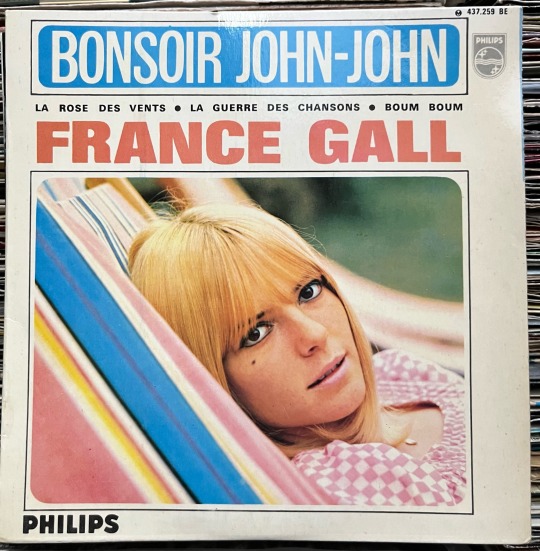


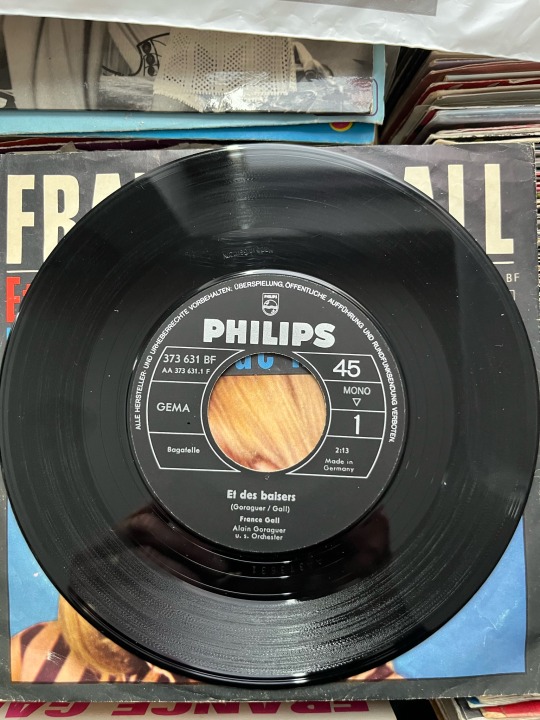

En 1966, France Gall sort « Baby pop » d’abord en EP ( parole de S. Gainsbourg) comme présenté ci-dessus (PMD : 7,95€) puis en album . L’album sort en octobre 1966 et reprend plusieurs chansons sorties en 1965 , en plus de celles reprises sur l’EP. C’est de nouveau Alain Goraguer et son orchestre qui accompagne la chanteuse. Dans cet album, on retrouve également le 45tours « et des baisers » (PMD : 10 €) à différencier de la traduction française de « Baci,baci, baci » adaptée par Eddy Marnay qu’elle chantera en 1969 .
En 1966, grâce aux paroles de Serge Gainsbourg, France Gall sort la chanson « Les sucettes » (PMD: 9,50 €). Cette chanson à double sens va avoir un succès mitigé même si on en parle toujours beaucoup . Ainsi , France Gall , toute innocente, s’en tient au sens premier de la chanson . Serge Gainsbourg s’amuse dans certaines interviews de l’innocence de la chanteuse qui finit par se rendre compte du double sens et n’ose plus sortir de chez elle , ni de participer à des interviews… Cette chanson ne sera vendue qu’à 50000 exemplaires. Elle sera reprise par Serge Gainsbourg dans l’album « Jane Birkin-Serge Gainsbourg » en 1969 . Elle reste néanmoins régulièrement programmée lors d’émissions évoquant les sixties.
La même année, elle chante « Bonsoir John John » , un hommage au fils de JFK . Cette chanson est écrite par Gilles Thibault et Claude Henri Vic et l’enregistrement est réalisé par Denis Bourgeois . Ce morceau sera repris sur l’album FG , également appelé « Les sucettes » et paru en 1966. « Bonsoir John John » sera vendu à moins de 50000 exemplaires. ( PMD : 8,00€) .
En 1966, elle sort encore « Oh ! quelle famille » dont les paroles sont écrites par son père et la musique par Georges Lifeman .
2 notes
·
View notes
Link
0 notes
Link
0 notes